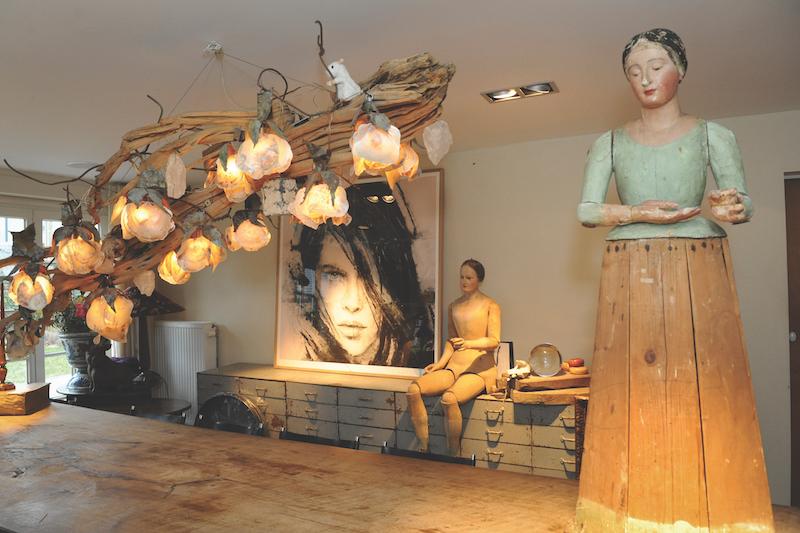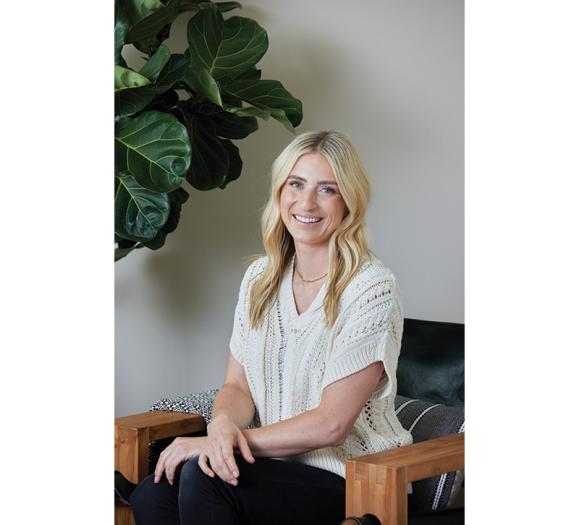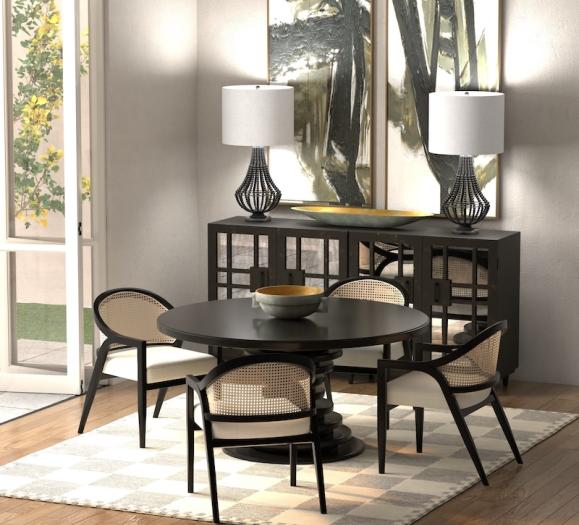The past two and a half years have dramatically changed the way people shop for furnishings: where they’re shopping, what they’re buying, and how they’re buying it. In the next five years, the home furnishings resale segment will be 29 percent larger than it was at the height of 2021. This growth rate will be three times as fast as traditional retail, according to the GlobalData 2022 Resale Home Furnishings Market Research Survey.
Which begs the question: what styles are trending in the world of vintage furnishings? Toma Clark Haines, CEO of The Antiques Diva & Co., an antiques buying and touring services company, is seeing influences from as far back as the 18th century. And she would know — Haines offers custom, private one-on-one antiques buying tours in 16 countries throughout Europe, Asia and America, catering both to private individuals and trade (antique dealers and interior designers). Her team of over 25 locally based guides are well-versed in the local culture, language and sources for antiques — whether that be flea markets, antique warehouses or private, by-appointment-only stores.
Jason Mulvene, President of Blue Ocean Traders, also believes vintage is resurging to correct the course of “fast” decor. His company imports distinctive vintage and handcrafted home and garden furnishings, with a focus on quality craftsmanship and enduring design. Clients range from independent boutiques to national, multi-store chains.
“Throw away decor is dead,” he says. “There was a glut of ‘click to buy’ home decor during the pandemic that was really just a form of retail therapy. I see that people have woken up with a hangover from ‘fast’ decor.”
A Return to Quality
Why go the antique route when furniture is mass produced every day? Haines believes clients are craving unique design paired with heirloom quality craftsmanship. When homeowners hunt down an antique piece, chances are they won’t see it replicated in their friend’s home.
“Homeowners are looking for real wood, real marble and the patina of paint,” she says. “Maybe not one layer of paint, but three layers of paint or five layers. I think texture is a reason a lot of people are buying vintage, because you can’t replicate it.”
Large, dramatic, over-the-top furniture is also trending according to Haines, alongside pieces that have gained a second life through architectural salvage. These items aren’t subject to rising prices or material and production delays; they already exist, so they are ready to be shipped.
“Even theatrical displays like screens and things like that are on trend,” she says. “With architectural salvage, sometimes homeowners buy a repurposed chimney and fireplace mantel. Sometimes it’s antique doors that are used as backdrops in rooms — we sell a crazy amount of antique doors, where they literally become the art on the wall.”
In general, Americans have become increasingly comfortable buying resale furniture, ranking it second only to books and media in terms of their comfort purchasing second hand. Haines says her father’s home in Oklahoma, for example, has a front door that was repurposed from a cathedral.
“The front door is stained glass, and the rest of the doors throughout his home come from a monastery,” she says. “When you’re living in a log cabin in southeastern Oklahoma, with monastery and cathedral doors — it makes an impact.”
More often than not, architectural salvage is bound to be wrapped up in a story. It could be the personal story of how the new owner found an item, a family tale about the previous owner or a larger historical story about the era it was created in.
“Without a doubt, learning the story behind each piece is also drawing antique dealers to me,” Haines says.
Clients find purpose for nearly any and all components of these salvaged homes, with seemingly nothing of value going to waste.
“There are a lot of chateaus that have sold pieces, so you can literally buy flooring from a chateau for example,” Haines says. “You can buy mantles from a chateau, window frames, etc. Particularly with my clients in Texas and California, that’s where I’m selling pieces that have come out of chateaus and castles in France.”
Customers have been similarly focused on longevity.
“We’re seeing a return to 18th century French, Swedish, Italian, you name it,” she says. “What’s interesting is, you can often buy 18th century furnishings for lower prices than 20th century items. I really think it’s less about money though, and a return to substantial, solid-made furniture. It’s what I sell all day long: tables, chairs, drawers, consoles.”
Though prices for home goods have increased at a significantly faster rate than inflation, vintage items also aren’t impacted by the same economic forces. Mulvene says he hears stories weekly about disappointment over knock-down furniture not matching up to expectations. The one-of-a-kind nature of vintage pieces counters the big box blandness of widely available, newly made goods.
“It’s a really interesting time for home decor and design,” he says. “It’s like all rules have gone out the window. The more different styles you can tie together and make work, the better. But the bottom line is people want quality, and interesting pieces.”
Sustainability and the Future
The sustainability movement also plays a part in the vintage movement. In 2022, members of every generation cited sustainability as a key factor in resale shopping. According to GlobalData, 54 percent of consumers agree that shopping secondhand is good for the environment.
“I think more and more, the younger generation is coming to antiques,” Haines says. “It’s not my target demographic, which tends to be 45 to 60 year olds, because that’s who books our tours. However, I truly do believe that with an emphasis on sustainability, we will begin seeing cross-generational use more than we’ve seen in the past because it’s the responsible environmental decision.”
Are homeowners interested in living in a vintage fortress, or do they interweave the classics within a modern space? While it ultimately depends on client taste, Haines says people no longer want to live in a “one period” home.
“I think it is 100 percent about the mix,” she says. “I’m actually working with a designer who does contemporary interiors, but she’s buying tons of vintage accessories in large quantities. That is what’s adding personality within the room — the pops, the color, the character. Even people who are doing more contemporary designs are using antiques and vintage.”
Mulvene sees trending items moving in several directions for the next few years.
“Mid Century is still very hot, but Scandinavian farmhouse specifically is trending [for us] right now,” he says. “At Blue Ocean we are also bringing back brown wood in a big way, along with classical sculpture.”
Haines has also seen Mid Century furniture sellers begin to shift to selling Art Deco.
“I’m convinced the next wave in antiques is going to be Art Deco,” she says. “It makes sense because we’re at that 100-year point. It’s a logical thing that it would be in vogue again.”
Over the next year, 81.3 percent of people are at least considering buying pre-loved home furnishings. It’s no surprise that the vintage market will continue to grow as more and more shoppers embrace it as a foundational part of their purchase patterns. Using vintage, designers and homeowners can now achieve a one-of-a-kind look that isn’t replicable on time, and on budget.
As the design world continues to see this transformational shift, the fast furniture fad may continue to fizzle.
“With production furniture, you pick the piece. With vintage, the piece picks you,” Mulvene says. “When you get that feeling, you know it, and no one has to explain it.”







